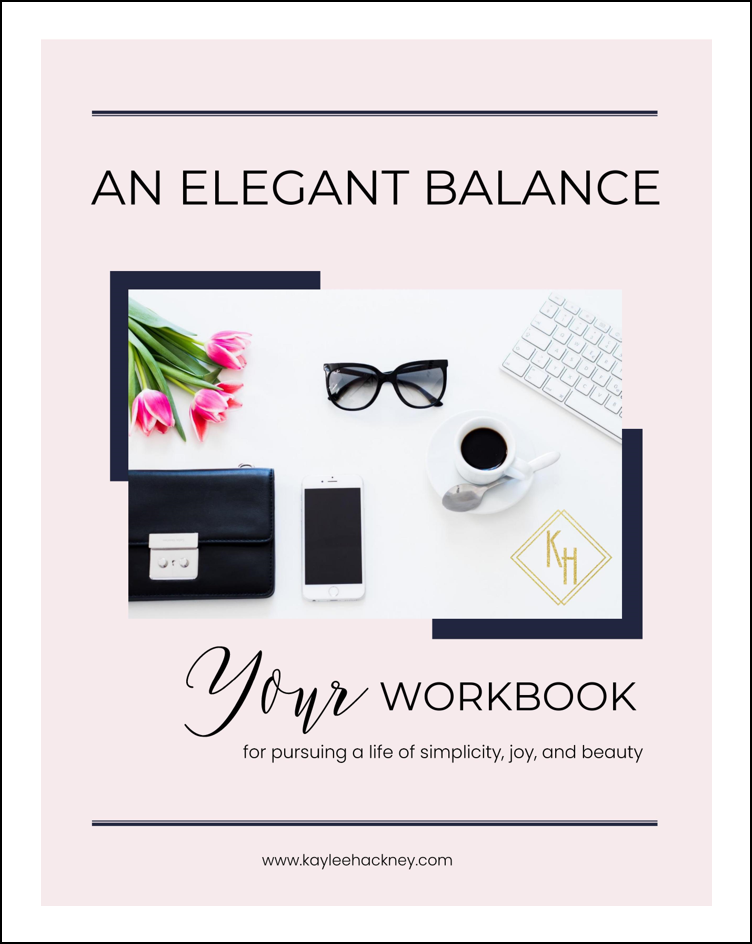Work & Love
“Love is patient and kind; love does not envy or boast; it is not arrogant or rude. It does not insist on its own way; it is not irritable or resentful; it does not rejoice at wrong-doing, but rejoices with the truth. Love bears all things, believes all things, hopes all things, endures all things. Love never ends.”
Prefer to listen?
I’ve introduced you to some of the key work-life concepts such as work-life conflict and work-life enrichment. With Valentine’s Day right around the corner, I thought it would be fun to talk about LOVE – just kidding. No, but really today’s topic is related to love because we are going to talk about how you and your spouse (or even just the people that you live with) influence each other’s psychological and physical well-being.
Have you ever stopped to consider how your experiences at work might affect your loved ones?
Think about a time when you had a really bad day at work – maybe your boss yelled at you, maybe you missed an important deadline, maybe you were just really overwhelmed with all the things that you needed to get done. At the end of that day, when you shut down your computer and drove home, were you able to just leave all that stress and negative emotion at the office? No, of course not. You carried it home! If you’re anything like me, you ruminated on it during your entire commute and still felt the stress and frustration as you pulled into the garage and walked into your house.
Okay, let’s stop there for a minute. This process – when experiences at work follow us home – is called spillover (Westman, 2001). Literally, our thoughts and feelings are spilling over from the workplace into our home.
But it doesn’t stop there, does it? We’ve all experienced this. We get home from a hard day at work – tired, stressed, & grumpy – and it influences how we interact with our loved ones. We snap at our spouse or greet them with a series of complaints about the day and before we know it everyone in the house is grumpy. This phenomenon, when our experiences from work rub off on our loved ones, is called crossover (Westman, 2001).
Want to start creating your ideal work-life balance?
I’ve created this workbook just for you! Inside, I help you define what work-life balance looks like for you and share some tips on creating that balance.
You can get it by clicking the button below!
Crossover can occur a few different ways. First, our stress can directly impact our spouse through an empathetic reaction. We love our spouses, and we share a great deal of our lives with each other. When we are stressed, it can cause them to feel empathy (imagining how they would feel if they were in our shoes) that increases their stress. Our work stress can also negatively impact our spouse indirectly because it affects our ability to support our spouse and the way in which we communicate with him. Obviously, we are not the only ones who can cause crossover; our spouses’ work experiences can follow them home and affect us too.
You may be thinking, “Wow, Kaylee. This is a really depressing Valentine’s Day post.” but stick with me. The good news is that spillover/crossover can occur through both negative work experiences and positive work experiences (Carlson et al., 2019). In the same way that a bad day at work can cross over to impact your spouse, a really great day can too. Let’s go back to our example – imagine that you had the most amazing day at work. You felt beautiful and confident all day long, your boss gave you a rockstar performance review and you were able to wrap-up a big project you’d been working on. That joy and excitement that you feel at the end of the day will follow you home and impact the way that you interact with your loved ones. Before you know it, everyone is excited and full of joy because they’ve picked up (either directly or indirectly) on your joy.
Crossover of stress can lead to a host of dysfunctional consequences such as depression, burnout, relationship tension, and marital dissatisfaction (Westman, 2001, 2006, 2016; Neff & Karney, 2007; Ferguson, 2012).
We want this positive crossover to occur.
But what should we do to mitigate the effects of negative crossover?
1. Knowledge is Power
I’m a firm believer that simply being aware of something can be a huge step in the right direction. Now that you know why your husband’s bad mood after work can seem to ruin the entire evening for everyone or why your kids seem extra cranky on the same day that you’ve had a rough day at work, you will be more prone to recognize what’s going on and to take intentional steps to stop the negative crossover in its tracks.
2. Spread the Joy
Like I said previously, crossover can be both negative and positive. Use this to your advantage and start spreading the joy. If you had a really great day at work, share it! Talk about your wins. Show your enthusiasm and excitement. Smile – I mean think about how difficult it is to NOT break out into a smile when someone is smiling at you.
Not feeling particularly joyful? Take some steps to find joy before heading home to your loved ones. Take a few moments at the end of your workday to write down 5 things that brought you joy that day. By focusing on the positive parts of your day before you go home, you will be more likely to cause positive crossover than negative. You could also play some peppy, uplifting music on your way home to help lift your spirits. My kids and I are always in a better mood when we rock out with family karaoke on the drive home from school.
3. Self-care is not optional
We are all less likely to experience intense negative emotions when we feel good. We can proactively avoid negative crossover by taking exquisite care of ourselves. So often we put self-care to the back burner because it feels selfish. Yet, if you think about how taking care of ourselves protects our families from the fallout of negative crossover it suddenly doesn’t seem so selfish. Take the time to get enough sleep, fuel your body with healthy foods, and engage in a physical activity that you love. When we’re rested, well-fed, and have the endorphins flowing we will be less likely to appraise events at work as stressful and overwhelming, consequently mitigating the negative crossover to our loved ones.
4. Make pausing a practice
Another way to avoid negative crossover is to practice pausing before you get out of your car and go inside your home. By pausing, you can take a few moments to recognize your feelings, remember that they are temporary, and remind yourself that you don’t want these feelings to spill over into your home and cross over to your family. I like to pray during this pause and give whatever burden is causing those feelings to God. Even taking 5 minutes in the car before heading inside will help you to calm down and enter your home peacefully.
5. Find another outlet
If you’re experiencing intense negative emotions, such as stress and overwhelm, you can find other outlets to channel your emotions so that you don’t spread them to your loved ones. Give yourself a “timeout” and take some time to journal your thoughts. You could even elicit the help of a trained mental health professional.
One final thing – crossover is an interpersonal phenomenon – it takes two.
Yes, I believe that your relationships will benefit from you alone learning about crossover and how to avoid it. But you are only half of the equation. It would be even more effective for you and your family if you shared this information with your spouse. You probably have a Valentine’s Day date coming up. Maybe you could chat about it then. Or maybe you set aside one evening after the kids are in bed to discuss it. Ask your spouse to listen to the podcast episode or send them the link to this blog post.
Take some time together to discuss crossover and where you see it occurring in your home. Talk about what the ideal evening at home would look like and then work your way backwards. Is one of you more likely than the other to experience work stress? Is one of you more sensitive to the emotions of the other? This is helpful information for you to start intentionally creating the work-life balance that you desire.
To really get the most out of this conversation with your spouse, I encourage you to download some of my free resources. First, there is the Elegant Balance workbook. In this workbook I help you define your ideal work-life balance, identify where your current work-life balance is falling short, and help you make a plan to unapologetically pursue an elegantly balanced life. Second, I have created a Life Planner to help you create a strategic plan for all areas of your life. In this planner, which accompanies this post, I help you get clear on your values and goals for your life. Both of these could be completed alone but imagine how much more momentum you could gain by completing these with your spouse. Maybe its not your typical Valentine’s Day date, but what could be more romantic than dreaming about and planning for the life that you want to live together?
Is a better work-life balance one of your goals this year?
I’ve created a workbook just for you!
If you’re interested in creating a work-life balance characterized by simplicity, joy, and beauty, why don’t you start by checking out my Elegant Balance Workbook? In it, I help you define what work-life balance looks like for you and share some tips on creating that balance. I’ve said it before, and I’ll keep saying it – Balance doesn’t happen by accident.
What are you waiting for?
Let’s pursue our Elegant Balance together!
References
Carlson, D. S., Thompson, M. J., Crawford, W. S., & Kacmar, K. M. (2019). Spillover and crossover of work resources: A test of the positive flow of resources through work–family enrichment. Journal of Organizational Behavior, 40(6), 709-722.
https://www.psychologytoday.com/us/articles/201906/protect-yourself-emotional-contagion
https://www.talkspace.com/blog/coronavirus-emotional-contagion-manage/
Westman, M. (2001). Stress and strain crossover. Human Relations, 54(6), 717-751.
Westman, M. (2016). Old and new trends in crossover research. Oxford library of psychology. The Oxford handbook of work and family, 140-150.















Sharing this with you makes me smile – I love thinking back to the girl who felt confident and beautiful in that rainbow shirt and the girl who refused to attend her college classes in baggy t-shirts and Ugg boots and instead opted for a sequined top. Because despite what I think about those choices now, in each of those seasons I was intentionally using personal style to my advantage.